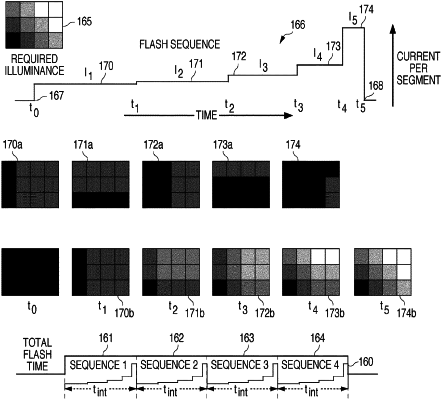| CPC G03B 15/03 (2013.01) [H04N 23/56 (2023.01); H04N 23/74 (2023.01); H04N 25/531 (2023.01); G03B 2215/0567 (2013.01)] | 20 Claims |

|
1. An illumination system, comprising:
a light-emitting diode (LED) array including a plurality of LEDs arranged in a plurality of rows and a plurality of columns,
each LED of the LED array being located in unique combination of row and column,
each LED of the LED array being powerable via a corresponding first electrical terminal and a corresponding second electrical terminal, the first and second electrical terminals including an anode and a cathode,
each row of LEDs having the corresponding first electrical terminals being electrically connected to one another and to a corresponding row switch,
each column of LEDs having the corresponding second electrical terminals being electrically connected to one another and to a corresponding column switch; and
a driver electrically coupled to the row switches and the column switches,
each LED in the LED array being electrically powered only when the corresponding row switch is closed and the corresponding column switch is closed,
the driver configured to selectively open and close the row switches and the column switches to selectively power the LEDs in the LED array over a plurality of time periods,
at least two LEDs in the LED array being energized during each time period,
the plurality of time periods being grouped in a time sequence such that a sum of illumination generated by each LED during all time periods of the time sequence equals a pre-determined amount of light,
the driver further configured to repeat the selective energizing of the LEDs to correspond to capturing of an image of a scene illuminated by light from the LEDs of the LED array.
|